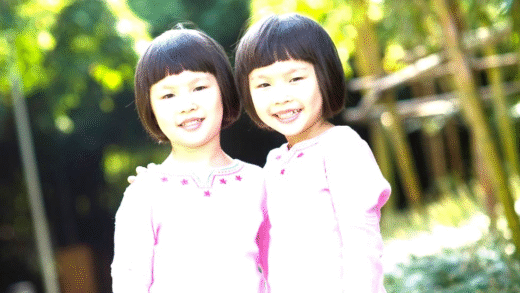Japanese traditions encompass seasonal practices, family legacies, and core cultural values that shape modern Japanese identity. Seasonal festivals reflect nature’s cycles, while families play a key role in passing down customs, ensuring continuity. These traditions embody respect, harmony, and perseverance, connecting past and present.
Japanese Tea Ceremony: The Art of Tea
Japanese traditions are deeply rooted in the cultural fabric of the nation, and the Japanese tea ceremony stands out as a remarkable expression of this heritage. Known as Chanoyu, this ceremony is not just about drinking tea; it’s a spiritual and aesthetic experience that emphasizes harmony, respect, purity, and tranquility. Each step in the process reflects centuries of refinement and cultural significance.
The tea ceremony involves a series of meticulous steps. First, the host prepares the matcha (powdered green tea) with precision, using special utensils like the chashaku (tea scoop) and chasen (tea whisk). Guests are invited to appreciate the beauty of the tea utensils and the surrounding environment, creating a moment of mindfulness. This practice encourages participants to slow down, appreciate the present, and connect with one another.
Moreover, the significance of the tea ceremony extends beyond the act of making and consuming tea. It fosters a sense of community and respect among participants. For many, attending a tea ceremony can be a profound experience, allowing them to understand Japanese aesthetics and values.
In conclusion, the Japanese tea ceremony is a beautiful representation of Japanese traditions, offering insight into the values and philosophies that shape Japanese culture. It is a ritual that continues to thrive, connecting the past with the present.
Shintoism’s Influence: The Roots of Tradition
Shintoism, Japan’s indigenous spirituality, plays a crucial role in shaping various aspects of Japanese culture. This belief system emphasizes the connection between humans and the natural world, honoring kami (spirits) found in nature. As such, Shintoism influences countless customs, rituals, and celebrations throughout Japan.
One of the most significant aspects of Shintoism is its emphasis on rituals and festivals, known as matsuri. These festivals often celebrate seasonal changes, agricultural cycles, and local kami, allowing communities to come together in gratitude and reverence. For example, the Oni Matsuri in February celebrates the end of winter and the arrival of spring, highlighting the cyclical nature of life.
Shinto shrines, adorned with beautiful torii gates and natural elements, serve as focal points for worship and community gatherings. They are places where individuals seek blessings for health, prosperity, and family well-being. Through these practices, Shintoism reinforces the importance of family and community ties, deeply embedding itself in Japanese traditions.
In summary, Shintoism’s influence on Japanese culture is profound and pervasive. Its teachings shape customs and traditions, creating a unique blend of spirituality and daily life that is celebrated across generations.
Festivals in Modern Japan: Celebrating Tradition Today
Modern Japan is a vibrant tapestry of tradition and innovation, and traditional festivals play a pivotal role in maintaining this balance. These festivals, or matsuri, are lively celebrations that showcase Japan’s rich cultural heritage, often featuring elaborate parades, traditional music, and local delicacies.
Many traditional festivals have evolved to adapt to contemporary society. For instance, the Gion Matsuri in Kyoto, which dates back to the 9th century, has transformed into a month-long celebration featuring stunning floats and community participation. This festival not only honors local deities but also fosters a sense of unity among residents.
Additionally, festivals like the Tanabata celebrate seasonal changes and community spirit. Participants write their wishes on colorful strips of paper and hang them on bamboo branches, creating a visually stunning display that symbolizes hope and aspiration.
In conclusion, traditional festivals in modern Japan serve as a bridge between the past and the present. They allow people to celebrate their heritage while fostering a sense of community and continuity in an ever-changing world.
Traditional Arts: Calligraphy and Ikebana
Japanese traditions are beautifully expressed through traditional arts, particularly calligraphy and ikebana. These art forms are more than mere hobbies; they are reflections of cultural values and philosophies. Calligraphy, known as shodo, emphasizes the beauty of strokes and the flow of ink, showcasing patience and precision. Each character written is a blend of art and spirituality, often evoking emotions in both the artist and the viewer.
Ikebana, the art of flower arrangement, conveys harmony, balance, and simplicity. Unlike Western floral arrangements that focus on abundance, ikebana highlights the beauty of each stem and leaf, often using asymmetry to create a sense of movement and life. This practice teaches practitioners to appreciate nature and the changing seasons, making it a meditative experience.
Both arts require dedication and skill, but they also serve as a means of connecting with others. Workshops and exhibitions promote communal learning and appreciation of these traditions. They reflect the Japanese philosophy of wabi-sabi, which finds beauty in imperfection and transience. In essence, calligraphy and ikebana embody the essence of Japanese culture, teaching us to value aesthetics in simplicity.
Japanese Wedding Customs: Ceremonies and Traditions
Japanese wedding customs are rich in tradition and symbolism, reflecting deep cultural values. Central to many weddings is the Shinto ceremony, where couples pay homage to kami at a shrine. This ritual emphasizes the couple’s commitment not only to each other but also to their families and ancestors. The attire is equally significant, with brides often donning a shiromuku, a pure white kimono symbolizing purity, while grooms wear traditional black kimono.
During the ceremony, couples partake in a ritual called san-san-kudo, where they sip sake from three different cups, symbolizing the joining of two families. The reception that follows is often a lively celebration filled with speeches, traditional music, and dance. Guests may give monetary gifts, known as shugi, to help the couple start their new life together.
These customs highlight the importance of family, community, and respect in Japanese culture. While modern weddings may incorporate Western elements, traditional practices remain at the heart of the celebration, ensuring that cultural heritage is honored. Thus, Japanese wedding customs are not just events; they are powerful rituals that connect generations.
Martial Arts Origins: The Legacy of Discipline
Japanese martial arts are steeped in tradition and discipline, rooted in historical practices that emphasize not just physical prowess but also mental fortitude. The origins of Japanese martial arts can be traced back to the samurai era, where techniques were developed for combat and self-defense. Styles such as kendo, judo, and karate reflect the warrior spirit and the values of respect, honor, and perseverance.
Each martial art has its unique philosophy. For instance, kendo focuses on the sword, teaching practitioners the importance of mental clarity and focus. Judo emphasizes using an opponent’s strength against them, highlighting strategic thinking. Karate combines physical techniques with a deep respect for tradition and discipline, often incorporating meditation to enhance mental strength.
Today, these martial arts are practiced worldwide, promoting physical fitness, self-discipline, and respect for others. They are not just sports but pathways to personal growth, bridging the past with modern practices. The legacy of Japanese martial arts continues to inspire individuals to pursue excellence and cultivate inner peace.
Seasonal Practices: Traditions Through the Year
Japanese traditions are significantly influenced by the seasons, which shape various cultural practices throughout the year. Seasonal changes dictate not only the festivities but also the foods, clothing, and even rituals that are observed. For instance, hanami, or cherry blossom viewing, marks the arrival of spring and is celebrated with picnics under blooming sakura trees. This tradition highlights the transient beauty of nature and the importance of appreciating fleeting moments.
Similarly, during summer, festivals such as Obon honor deceased ancestors and involve family gatherings, dances, and lantern lighting. In autumn, the harvest moon is celebrated with Tsukimi, where people admire the full moon and enjoy seasonal foods like mochi. Winter brings about Shinto rituals to welcome the New Year, including hatsumode, the first shrine visit of the year, where people pray for health and prosperity.
These seasonal practices not only reflect the cyclical nature of life but also reinforce communal bonds and cultural identity. By participating in these traditions, individuals connect with their heritage, fostering a sense of belonging and continuity.
Passing Down Traditions: Family Legacy
Passing down Japanese traditions is a vital aspect of cultural preservation. Families play a crucial role in this process, ensuring that customs and values are transmitted from one generation to the next. Common practices include teaching children about Shinto rituals, cooking traditional dishes, and celebrating festivals together. For instance, children learn the art of calligraphy and ikebana from their parents, fostering a deep appreciation for these arts.
Family gatherings during significant holidays are opportunities to share stories and experiences, reinforcing the importance of cultural heritage. Grandparents often recount tales of their youth, providing context to traditions and instilling a sense of pride in family history. Additionally, participation in ceremonies, such as weddings or coming-of-age celebrations, further solidifies these bonds.
By embracing and passing down these traditions, families ensure that the essence of Japanese culture remains alive and vibrant. This legacy not only enriches the lives of individuals but also strengthens the community as a whole.
Cultural Values Reflected: The Heart of Japanese Culture
Japanese traditions encapsulate core cultural values such as respect, harmony, and perseverance. These values are evident in various practices, from the meticulous nature of the tea ceremony to the communal spirit found in festivals. The emphasis on Shinto beliefs underlines the importance of nature and spirituality in daily life, shaping how individuals interact with the world around them.
Furthermore, traditional arts like calligraphy and ikebana reflect the aesthetic principles of wabi-sabi, finding beauty in imperfection and simplicity. This philosophy encourages a mindful appreciation of the present, fostering a deeper connection to cultural roots. As Japan continues to evolve, these traditions remain integral to its identity, bridging the past with modern society.
In conclusion, the interplay of seasonal practices, family legacies, and cultural values defines the essence of Japanese traditions. These elements not only preserve the richness of Japanese culture but also ensure its relevance in today’s world.





Comments are closed.